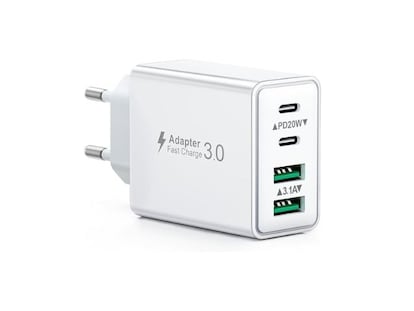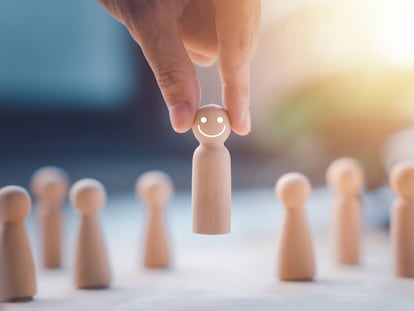Biobanking: Reliable Cancer Research
If physicians could heal every patient they could be seen as gods. This is not only because much of the trust shown by patients is based on the “faith” they have in their physician, but also because their “hope” to continue living promotes healing. However, in the case of an advanced cancer, such hope is often ineffective, as we cannot heal “cancer”.
Nevertheless, new knowledge gives rise to new hope as there is a realisation that there is no such thing as cancer. Instead, such knowledge shows that, in cancer, a damaged somatic cell fails to break into its components and continues to replicate instead. Cell death in which the cell breaks into fragments is called “apoptosis” and along with a complex healing process called “regeneration” a vital balance is created. Signalling pathways have a crucial influence on this balance. Regeneration researchers have been able to distinguish “good” and “bad” factors within these pathways. For example, the lack of a certain growth factor that augments liver regeneration seems to favour the development of liver cancer. Signalling pathways can malfunction in various ways and to a varied extent. Moreover, such malfunctions can develop in many different ways. This is why—apart from removal surgery—there is no universal “cure for cancer” and why there are individual cancers for which there is no remedy.
At present, research results are, to an increasing extent, being based on statistical evaluation of huge amounts of data that were acquired from examination of the regulatory processes within cells. The aim of such research is “organ or cancer simulation”, through integrated modelling. This so-called “systems biology” approach makes it possible to predict the ways that organs function and to predict the way a cancer starts. Moreover, it allows us to identify certain molecules, so-called “biomarkers”, that ultimately provide information about the extent to which a cancer is treatable.
Inexhaustible sources of data for such modelling are the blood or tissue samples that are routinely taken from patients. Such samples yield information on genetic material (DNA), regulatory molecules (RNA), proteins, and metabolic products. Another source of data is the patient’s medical record. Cancer patients who leave the surgical clinic at Grosshadern Hospital, Ludwig Maximilian University, Munich, can opt to make their tissue and blood samples, linked to their personal data, available for research. But this form of “data retention” for research purposes can raise many questions. For example: What methods are to be used for collecting, processing, and storing the tissue? What ethical and legal standards have to be observed? What data are important to include? How are personal data to be linked to the samples, and how can privacy be guaranteed? How can access be controlled and how are costs to be borne?
These “pre-analytic” questions, which address the processes needed to create a basis for acquiring knowledge about human tissues from specific experiments, have great significance. For several years now, researchers at the Grosshadern Clinic tissue bank have been systematically working on these issues as part of an interdisciplinary field of research. The clinic has already implemented research that ensures the data meet certified quality management requirements (DIN EN ISO 9001: 2008). This requires the development and maintenance of standardised, fully documented procedures as well as following structured data acquisition and output practices.
Tissue research results reveal a clear preference for experimenting with “fresh” tissue and/or “living” cells. Preservation by means of shock-freezing with storage at −80°C, or lower temperatures, is suitable for obtaining “reference samples”. So far, such samples have been the only possible form of long-term “data retention”. The preference for fresh samples means that the future of clinically relevant “biobanking” will mainly lie in ensuring the availability of fresh samples for research. This will require improvements in preservation logistics and in the clinical infrastructures that are linked to patient care.
Given this background, a great challenge to physicians is to live up to the great faith that patients now, and in the future, place in biobanking research. Considering the modest means we have available, biobanking will, ultimately, be possible only through continuous participation by patients as the tissue (for example from the removed tumour) is their property. At the Grosshadern Clinic, if the patient wishes to make their tissue and data available for research, they may do so in the form of a donation via a trustee, in this case via the Human Tissue and Cell Research foundation.
The main aim for the future is to link existing research infrastructures into a joint biobank network. To that end, the “m4 Biobank Alliance” project was initiated in Munich in 2010 with support from m4 leading-edge cluster funding.
Tu suscripción se está usando en otro dispositivo
¿Quieres añadir otro usuario a tu suscripción?
Si continúas leyendo en este dispositivo, no se podrá leer en el otro.
FlechaTu suscripción se está usando en otro dispositivo y solo puedes acceder a EL PAÍS desde un dispositivo a la vez.
Si quieres compartir tu cuenta, cambia tu suscripción a la modalidad Premium, así podrás añadir otro usuario. Cada uno accederá con su propia cuenta de email, lo que os permitirá personalizar vuestra experiencia en EL PAÍS.
¿Tienes una suscripción de empresa? Accede aquí para contratar más cuentas.
En el caso de no saber quién está usando tu cuenta, te recomendamos cambiar tu contraseña aquí.
Si decides continuar compartiendo tu cuenta, este mensaje se mostrará en tu dispositivo y en el de la otra persona que está usando tu cuenta de forma indefinida, afectando a tu experiencia de lectura. Puedes consultar aquí los términos y condiciones de la suscripción digital.
Archivado En
Últimas noticias
Lotería Nacional: sorteo del jueves 25 de diciembre
Respaldo del PP y críticas de la izquierda al discurso de Navidad del Rey
Tres de cada diez empleadas de hogar trabajan sin evaluación de riesgos por parte de sus empleadores
Feijóo entrega a la jueza los ‘whatsapps’ que recibió de Mazón el día de la dana
Lo más visto
- La revalorización de las pensiones queda en el aire por la negativa de la derecha a apoyar otras medidas sociales
- Juan Carlos Ferrero: “Más que dolor, siento pena; los finales siempre son tristes”
- El líder groenlandés responde a Trump: “Groenlandia es nuestro país. Nuestras decisiones se toman aquí”
- La cúpula de Vox votó por unanimidad la destitución de Javier Ortega Smith
- Los ‘whatsapps’ de Mazón a Feijóo del día de la dana: “Un puto desastre va a ser esto presi”




























































